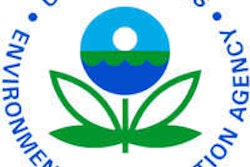
More than a year after hosting a two-day meeting in Geneva to examine the potential risks of amalgam restorations and discuss alternative solutions, the World Health Organization (WHO) is set to issue a report that confirms the ongoing need for the material's use and outlines the risks of an outright ban, but also sets the stage for phasing down its use worldwide, according to a draft of the report obtained by DrBicuspid.com.
During the meeting, which was held in November 2009, the United Nations Environmental Programme (UNEP) and other groups weighed in on concerns about the impact of mercury on the environment and human health. The UNEP has worked with WHO to reduce mercury use and release and also nongovernmental organizations such as the International Association for Dental Research and FDI World Dental Federation.
Representatives of the U.S. Food and Drug Administration (FDA ) -- which has convened an advisory panel on December 14 and 15 to discuss several scientific issues that may affect the regulation of dental amalgam -- also attended the WHO meeting.
After considering various alternatives to dental amalgam, the WHO ultimately came out in favor of its continued usage due to its superior longevity, ease of use, and low cost, according to the report. The WHO is now recommending a "phasing down" of the material instead of a "phasing out," which was deemed premature.
"It would be a great disservice to ban a preventative that is safe and effective when there are means to minimize the environmental impact from the material," said Daniel Meyer, DDS, senior vice president of the ADA Division of Science/Professional Affairs, who attended the meeting. "We all have the responsibility to take care of the environment, but it's certainly a stretch to impose regulations that might have an adverse side effect on the public from an oral health and overall health perspective."
Legally binding measures
During the next meeting on mercury in 2013, the WHO intends to establish voluntary and legally binding measures through a treaty that would have a "significant impact on delivering oral healthcare worldwide," with timetables outlining the reduction of amalgam use, according to the report.
“The U.N. would like to see a ban or less use of amalgam.”
— Daniel Meyer, DDS, senior vice
president, ADA Division of
Science/Professional Affairs
"From an environmental point of view, the U.N. would like to see a ban or less use of it, but there would have to be some exceptions," Dr. Meyer told DrBicuspid.com.
The WHO is also emphasizing caries prevention, given the high rate of caries in wealthy nations and rapidly rising rates in developing countries.
"The WHO is interested in enhancing preventative programs and disease management programs in developing countries," Dr. Meyer said. "Ultimately that would lead to decreased use of all restorative materials."
During the 2009 meeting, a minimal intervention approach received support as a means of achieving this goal, with a focus on remineralization, fluoridation, education, and repairing existing fillings. The shift in focus from restoration to better oral health maintenance also includes an emphasis on tooth survival.
Additionally, the WHO is calling upon the research community to increase the amount of evidence-based data available that measure the effectiveness of alternative restorative materials, according to the report.
"One concern is that resin composites can't be used in a number of situations," Dr. Meyer said. "In developing countries, there are concerns with storage, electricity requirements, and the frequency of replacing resin composite compared to amalgam or any other type of material. Environmental impact of BPA [bisphenol A] in resins and sealants was also considered."
Finding a balance
For mercury in amalgam, the WHO report emphasizes the need for a clear means of mitigating environmental degradation from its disposal. Bulk collection programs, chairside trap and vacuum filters, amalgam separators, and waste disposal services are all recommended. And feasibility and cost, particularly for developing nations, was again acknowledged as a significant challenge.
"It may be argued that there will be no toxicologically meaningful reduction in the amount of mercury in the environment ... [but] the annual cost to the dental industry of reducing one ton of potentially bioavailable mercury is about $273 million to $1.2 billion," the report states.
Data contained in the report put the amount of mercury discharged into the environment from dental amalgam annually globally at 260 to 340 tons.
Even so, a declining trend of amalgam use is anticipated, according to the WHO, noting that, among other things, patients' preference for tooth-colored restoratives may eventually displace it. However, getting third-party payor systems to cover alternative restoratives and creating materials that are as effective as amalgam remain a challenge.
As 2013 approaches, the UNEP Global Mercury Partnership will facilitate expert consultations and negotiations, and work with its partners to implement initiatives aimed at mercury use reduction, the report noted. Meanwhile, the WHO intends to guide the oral health profession in negotiating and creating a legally binding framework for mercury use. The meeting in 2009 set the stage for these efforts.
"A balance was struck," Dr. Meyer said. "There was a consensus reached, and certainly from a health and environmental point of view, we have to reach a common ground with a reasoned, common sense approach and not over- or underregulate."
Copyright © 2010 DrBicuspid.com



















